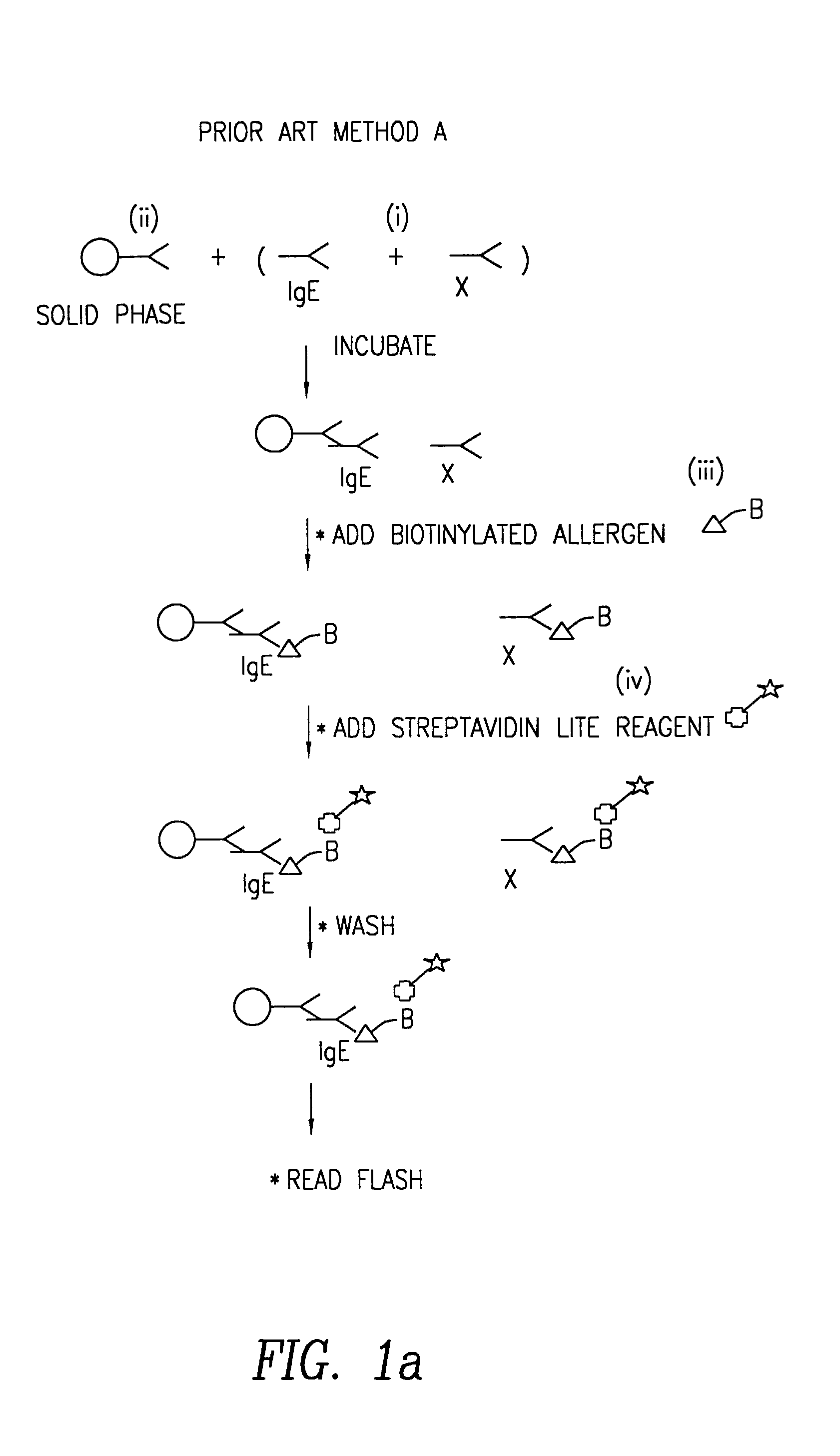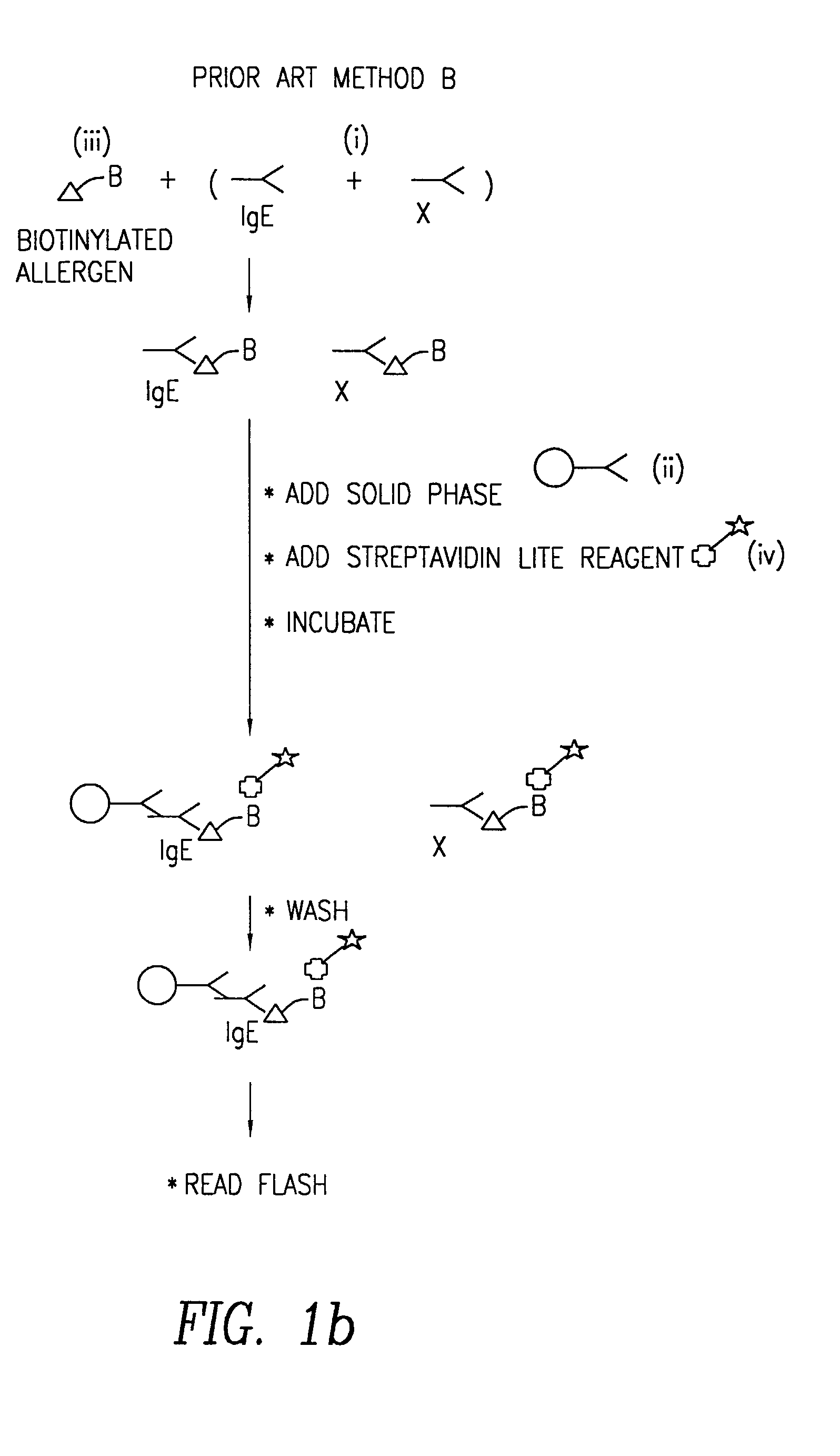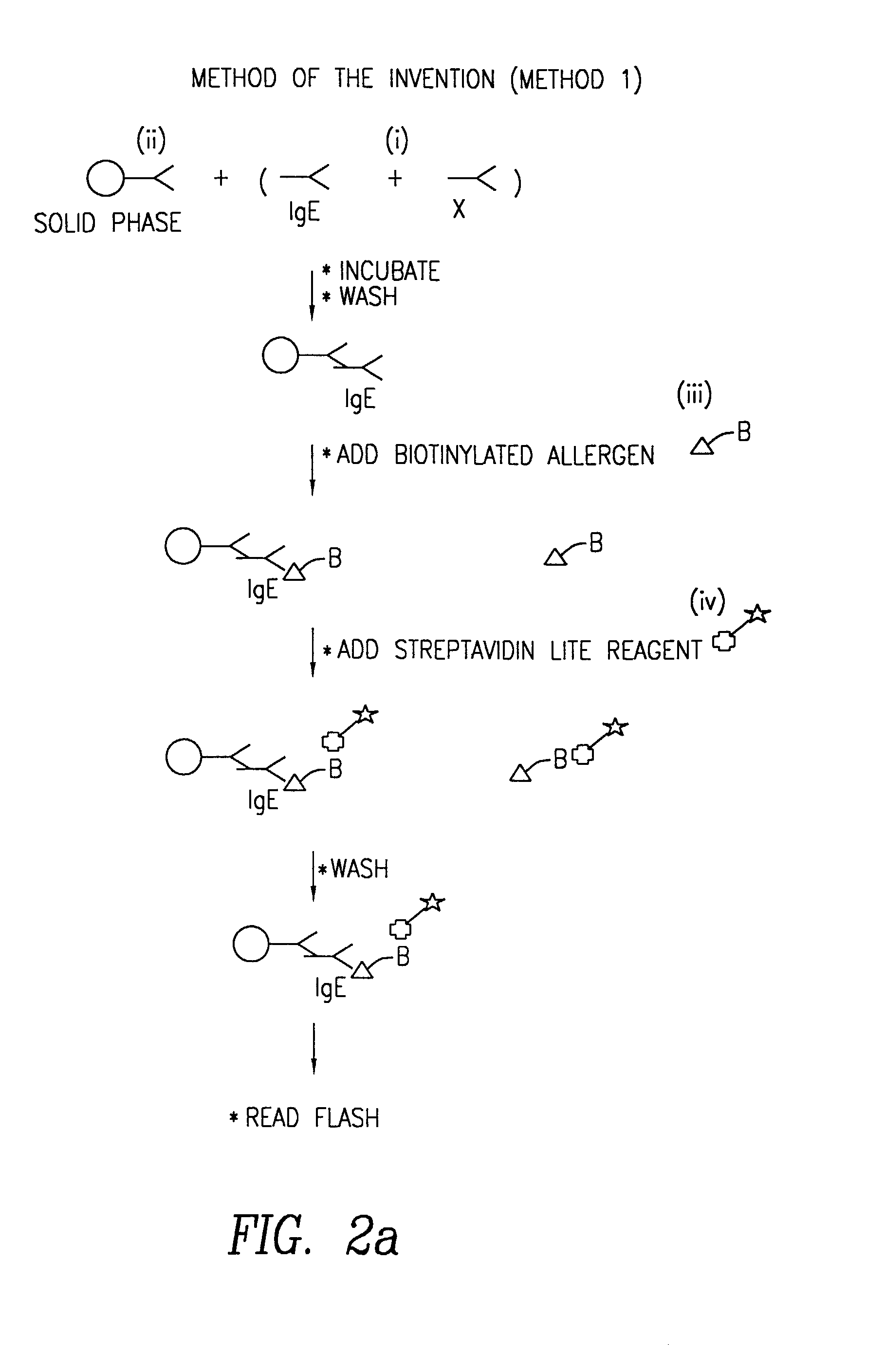Method of detecting an antibody in a liquid sample
a liquid sample and antibody technology, applied in the field of two-site immunoassay, can solve problems such as results obtained errors
- Summary
- Abstract
- Description
- Claims
- Application Information
AI Technical Summary
Benefits of technology
Problems solved by technology
Method used
Image
Examples
example 2
Interference with Specific Antibodies from Other Classes (IgG)
[0089]Determination of specific IgE against Betula verrucosa (Silver birch) allergen was performed by the three different methods as described in Example 1 in the presence of varying amounts of competing specific antibodies. More specifically, a serum pool of 5 birch pollen sensitive patients was mixed in a 1:5 ratio with IgE negative serum containing different titers of rabbit polyclonal anti-Betula verrucosa antibody (ALK-ABELLÓ A / S, Horsholm, Denmark). The control contained no rabbit antibody.
[0090]The results shown in FIG. 7 are expressed as % recovery calculated as the response obtained with rabbit antibody in the sample relative to the control. Responses were given in Signal / Background. Recoveries less than 100% indicate that addition of competing antibody reduces the response while recoveries higher than 100% indicate that addition of competing antibody increases the response.
[0091]It can be concluded that Method 1...
example 3
Dilution Curves with Samples from Patients Undergoing Specific Allergy Vaccination (SAV)
[0092]Determination of specific IgE against Alternaria alternata (mould) allergen was performed by Prior Art Method B and Method 1 as described in Example 1 except that biotinylated Alternaria alternata allergen was used instead of biotinylated Betula verrucosa allergen. The working dilution of biotinylated Alternaria alternata allergen was 1:400 in both the Prior Art Method and Method 1.
[0093]Sera from four patients undergoing Specific Allergy Vaccination (SAV) were serially diluted by a factor two to give four samples prior to analysis in each of the two different methods. As a reference sample, a serum pool of 5 Alternaria alternata sensitive patients was used.
[0094]FIG. 8-12 show results for samples from the four SAV patients and for the reference sample. The results shown in FIG. 8-12 are the responses obtained with the different diluted sera relative to the expected responses. % Recovery is...
example 4
Monitoring of Immune Response During House Dust Mite SAV
[0097]Determination of specific IgE against Dermatophagoides pteronyssinus (House dust mite) allergen was performed by Prior Art Method B and Method 1 as described in Example 1 except that biotinylated Dermatophagoides pteronyssinus allergen was used instead of biotinylated Betula verrucosa allergen. The working dilution of biotinylated Dermatophagoides pteronyssinus allergen was 1:250 in both Prior Art Method B and Method 1.
[0098]Serum samples were obtained from patients involved in a clinical study. A total of 30 patients were given either placebo treatment (N=14) or SAV with a 1:1 mixture of Dermatophagoides pteronyssinus and Dermatophagoides farinae allergen (Alutard, ALK-ABELLÓ A / S, Horsholm, Denmark) (N=16). Samples were drawn prior to treatment (t=0), after 6 months of treatment (t=6) and after 12 months of treatment (t=12) and all samples were analysed by the two different methods. Results were obtained as Relative resp...
PUM
| Property | Measurement | Unit |
|---|---|---|
| concentration | aaaaa | aaaaa |
| pH | aaaaa | aaaaa |
| concentration | aaaaa | aaaaa |
Abstract
Description
Claims
Application Information
 Login to View More
Login to View More - R&D
- Intellectual Property
- Life Sciences
- Materials
- Tech Scout
- Unparalleled Data Quality
- Higher Quality Content
- 60% Fewer Hallucinations
Browse by: Latest US Patents, China's latest patents, Technical Efficacy Thesaurus, Application Domain, Technology Topic, Popular Technical Reports.
© 2025 PatSnap. All rights reserved.Legal|Privacy policy|Modern Slavery Act Transparency Statement|Sitemap|About US| Contact US: help@patsnap.com



